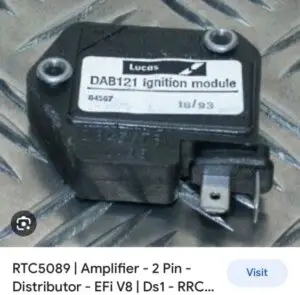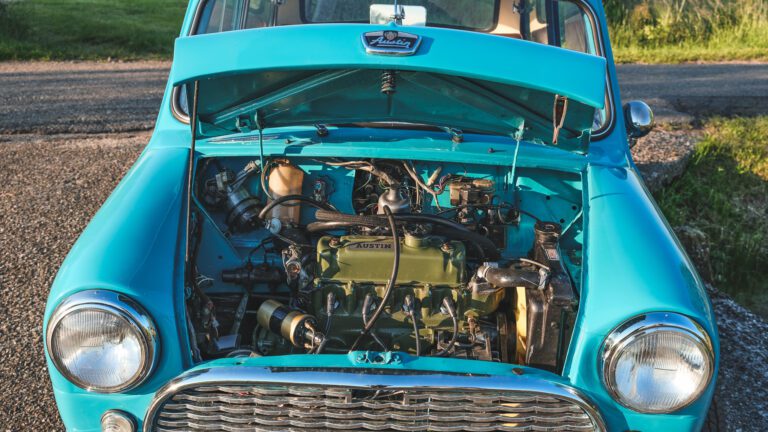VW type 1 engine adjustment
We’ve worked on several Type 1 Volkswagen engines requiring carburetor adjustments, and they can be quite tricky to get just right. Common issues include flat
“Solving Range Rover’s Overheating Ignition Coil Problem”
Introduction
While cruising through the streets of Amsterdam my sister’s beloved Range Rover V8 was stranded without warning in the bustling heart of the city. The ignition coil mysteriously overheated, leaving her powerless to restart the engine. This blog post will take you through our journey to break down the problem and find the solution.
The Initial Issue
When my sister borrowed the Range Rover, it suddenly stopped in Amsterdam’s busy streets, unable to get her fired up again. When I arrived half an hour later to assist the car fired up without a hitch. This problem was however far from over.
The repetition
For the next week, the Range Rover ran flawlessly, only to relapse into its stalling habit a week later. Every 15 minutes of the engine running the car would sputter and quit altogether within seconds. Each time, I noticed the ignition coil had reached a scorching temperature, rendering it untouchable. Replacing the ignition coil would solve the issue temporarily. It was more band-aid because after 15 minutes the stuttering came back and the coil was heated up again.

The Hunt for Answers
We ruled out the ignition coil as the root cause. It was evident that something was disrupting the ignition coil’s circuit irregularly, but what could it be? Extensive online research led to no solutions, so we turned Ignition Amplifier, a critical component controlling trigger pulses and ignition coil operation. Let’s have a look at the function of an amplifier:
Working of the Ignition Amplifier
The amplifier plays a pivotal role in the ignition system by sensing the trigger pulse and amplifying the voltage to the correct level for the switching transistor. It controls when the ignition coil is activated to build the magnetic field and, conversely, when to deactivate it to induce the secondary spark.
Where is it placed?
The ignition amplifier is typically mounted on the side of the ignition distributor or on an aluminum plate near the ignition coil, either with a 2 or 3-pin connector.

The Resolution
The ignition amplifier was sending irregular trigger pulses to the coil. This erratic behaviour prevented the coil from discharging properly and caused it to overheat. Replacing the faulty amplifier resolved the issue. When you’re at it we highly recommend replacing the coil as well, the lifetime could be highly decreased by overheating.
Supplementary
Six months later, with a different Range Rover, we have another problem. The Rover V8 struggles to start, sometimes requiring a prolonged attempt to finally get going. With the help of spark plug testers, it doesn’t seem to be a definite issue, but it’s clear that the sparks are weak and sometimes barely present. This time, the coil stays at a normal temperature. After testing the points, rotor, and cap, we decided to replace the ignition module, and to our surprise, this solved the problem. The engine starts and runs smoothly!
We’ve worked on several Type 1 Volkswagen engines requiring carburetor adjustments, and they can be quite tricky to get just right. Common issues include flat

“The Ultimate Land Rover Oil Guide: From 1970s Classics to 2016 Defenders.” Our oil recommendation guide was created to help Land Rover owners find the

“Click the button below for quick access to our Engine Number Decoder specifically designed for A and A+ series engines.” Where and what does the
By subscribing we’ll be welcoming you into our garage, with regular updates about the cars we work on and products that will come up for sale.
1. At Brooks, every product we make is built to last. We want our customers to drive away at ease and know their car is technically good. Although most of this work will go unseen, you’ll feel it the second you step behind the wheel.
Customers should have access to safe, reliable, and secure services whenever needed. We believe that this is one of the most important aspects of owning a classic car. Find more about our repairs and services in the repair and maintenance section above.
00 316 38 37 66 91
[email protected]
Broekseweg 100, 4231VH
Meerkerk, The Netherlands
KvK: NL81356773
BTW: NL862055489B01
2025 by Brooks Motors
Created for you.